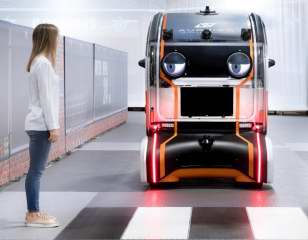|
 previous / next column previous / next column
A PHYSICIST WRITES . . .
(September 2018)
[If you are reading this immediately after my previous column, labelled July but written in June, you may be pleased to know (and I’m certainly pleased to tell you) that I have recovered well from my operation at the end of June, with just a few months of mild chemotherapy to face now.]
Mrs S and I are devotees of University Challenge on BBC2 – surely the best of all quiz-programmes, with its mix of teamwork and fast individual thinking, the reassurance it gives us that young brains can grapple with difficult questions, and the occasional opportunity that it offers to viewers with more experience of life, to beat them to it! Asking the questions, Jeremy Paxman happily gives his impression of knowing all, and only occasionally reveals his ignorance of things with a mispronunciation, or by allowing a wrong answer or rejecting a right one.
Not that we watch UC when it’s being broadcast: too often we’re otherwise occupied, so we always record it and then watch the series at our leisure sometime later. (This has the added advantage of allowing a rewind for rehearing a question or an answer.) And that is how, a few weeks ago, I learned something that suddenly put my whole career in perspective, though I’m glad not to have known it at the start or I might have careered off in a different direction altogether.
The starter-question that Paxman asked was, “Complete the following quotation from the German mathematician David Hilbert: Physics is too difficult for ...”. The first answer given was wrong, but the second was correct – physicists! So that’s why I never felt in anything like full command of the subject, or understood much of what other physicists were working on (except for those like Richard Feynman with a gift for explaining themselves).

And yet I always knew I was a physicist myself, from the way I looked at the world and how it behaved, obeying all the basic laws. I had a good grasp of these, at least, and I’ve tried to make the best use of it.
Ah – what Hilbert probably meant, I’ve just discovered, was that physics is too difficult for physicists without the aid of mathematicians. And it’s true that maths plays a big part in the working out of theories and ideas in physics. Well, fortunately I possess a mathematical mind too, so I guess it was the combination of these two subjects (at a basic level) in my brain that got me through, without being rumbled!
Now of course, in retirement, I can do what I like. And write what I like. In more than 160 of these columns I’ve aimed firstly to use physics itself to illuminate some of the world of motoring, then also to use my physicist’s ways of thinking to do the same and then, as well, to entertain with whatever other information and ideas I can offer. This last goal isn’t usually difficult to achieve in my September column (which always follows a gap in August), as I look back at the summer silly-season of news...
Actually my best story dates from April: on a stretch of road in Friesland in the Netherlands, and at a cost of €80,000, ridges were laid down (as in rumble-strips but wider) and spaced out so that when driven over they generated a tune – the Frisian regional anthem. The intention was to encourage drivers to stick to the 60 km/hr speed limit: “If you drive at the right speed, you are rewarded with the melody,” said a spokesman for the province.
But can you see the absurdity in this? Drivers would surely have heard the tune whatever their speed, though most often it would be in the wrong key, and playing at a tempo proportional to their own. And then if we assume that the road was single-carriageway with the ridges laid in each direction, think what would happen while you were overtaking: your tune would be sounding backwards, and in a higher key than from the other vehicle.
Anyway, what put a rapid end to the scheme was that nearby residents “revolted at the mental torture” of hearing their local anthem played by passing traffic 24 hours a day. Less than a week after being installed, the ridges were smoothed away!
Is there a single major car manufacturer now who is not working to develop driverless vehicles (I call them autos, remember)? I don’t think I was aware that Jaguar Land Rover was in the field until I read a newspaper item headed: “Driverless car keeps a close eye on pedestrians”, along with the photo below – which was an inducement for me to look at the company website for more detail.

As you can see, large eyes have been fitted to the front of an auto. The idea is that they will swivel in a manner that encourages the pedestrian (once detected) to cross safely in front. Hm... if the swivelling was to left and right, I think I would take it to be the equivalent of a shake of the head, and a warning not to cross. And then after a few seconds, I suppose, the fearsome auto-eyes would tilt upwards (the equivalent of a shrug of the shoulders), and the vehicle would drive on.
According to the research manager at Jaguar LR, “It’s second-nature to glance at the driver of the approaching vehicle before stepping into the road.” So, what they appear to be investigating in this project is whether enabling ‘similar’ eye-contact between pedestrians and autos will make the machines more acceptable. But I don’t believe you get proper eye-contact even now: as I pointed out here a couple of years ago, generally it’s hard to see the driver through the windscreen of a car, because of reflected light! And as for the detection-system on an auto, looking ahead for pedestrians, will it ever be capable of identifying their exact direction of gaze like a real driver can? I suspect not.
With so many other tricky aspects of introducing autos to be sorted out too, I can’t see that the obstacles to running them freely on open roads will be overcome any time soon, in spite of the hard work being done by all the companies that are trying to develop them. One such is Google – but the news from the US town where a subsidiary business has been testing minivan-autos is that they are greatly disliked by residents.
Their reasons are the caution that’s programmed into the vehicles, and (especially) the unnatural behaviour they exhibit in (a) following traffic laws to the letter, and (b) expecting human drivers and pedestrians to do the same. Somehow the antipathy will have to be overcome, but how? There’s a challenge to be grappled with, by the clever teams at Google University...
Peter Soul
previous / next column
|